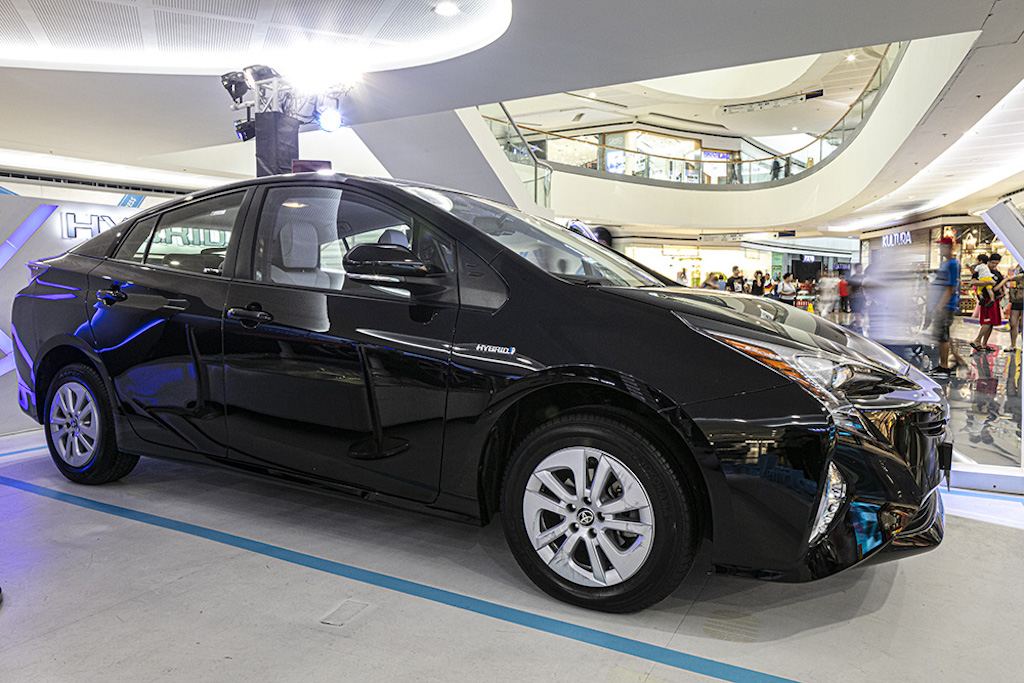An undeniable amount of research and data present one indisputable fact about the Philippines: The country’s carbon dioxide emissions are at all-time highs and continue to grow unhampered year after year. Data shows that we’re at 132.18 million metric tons of CO2 this year, a significant amount (around 69 percent) of which comes from cars.
The same research reveals a startling trend of upticks in emission levels—even though they may seem small at single-digit percentages, the implications on the environment are no less real.

This is why an overhaul in the way the automobile industry approaches cars and their designs is necessary, especially in the Philippines, where almost all land vehicles are gas- and diesel-based. The time to think about moving people in more sustainable ways is long overdue. Hybrid electric vehicles (HEVs), a technology prevalent in other countries, are finally making their mark here through the efforts of Toyota Motor Philippines in debuting an HEV variant of the all-new Corolla Altis, making it the third available HEV after the Prius and Prius C.

In a nutshell, Toyota’s HEVs mix a traditional fuel internal combustion engine with an electric motor and battery in one vehicle. During slow speeds, the electric motor powers the car until it accelerates to a higher threshold speed, at which point the combustion engine takes over and also charges the battery for its next use. While idling, both the engine and electric mother shut off. The result is not only cleaner vehicle emissions but also greater fuel efficiency—with these HEVs, Toyota aims to reduce CO2 emissions by 35 percent by 2030, and eventually by 90 percent by 2050.
Electric dream

For anyone wondering whether an HEV performs any differently than your traditional car with a combustion engine, especially at lower speeds when the electric motor is powering the vehicle, the short answer is there’s no discernible difference except for a noticeably quicker drive.
Toyota let us test-drive its all-new Prius, one of its flagship HEV models, at the Hybrid Caravan event on Dec. 5 at SM Mall of Asia, and the biggest takeaway was that the ride was so pleasant, it didn’t feel like a vehicle of the future but a technology meant for today.
Despite much ado being made about the hybrid setup, the ordinary driver wouldn’t sense it working under the hood right away. The transition from the 53kW electric motor at low speeds into the 16V engine powering it as the car picked up was smooth; you wouldn’t notice when the systems would change unless they looked at the convenient heads-up dashboard display to see that the battery, which takes over again when the speed drops, was already charging. (This battery would also come in handy in the event the fuel tank runs out—however, completely relying on battery power would limit the car to slow speeds.) What was more jarring for an experienced driver than the hybrid system was the infinitely more convenient knob-based automatic transmission.

Beyond the next-generation technology powering it, the Prius is also a beauty to behold, with sharp, striking edges on its façade that scream “this is the car of the future” without bordering too much on sci-fi.
Moving towards greater sustainable mobility

Toyota is certainly resting its hopes on the Prius and its types being the cars of the Philippines’ future as the need to cut down on CO2 emissions not only in the country but also around the world grows more urgent by the year.
Beyond the improvements brought about by the vehicles themselves, Toyota Motor Philippines has also dedicated itself to implementing more sustainable production. This includes measures to reduce carbon footprint of its entire production and distribution chain, use renewable energy to power factories and plants, conserve resources, and promote reforestation and biodiversity by 2050.

With Toyota Motor Philippines leading the local auto industry through efforts such as these, its grand vision of a Philippines soon served better by sustainable mobility is more than attainable.
Get more stories like this by subscribing to our weekly newsletter here.
Read more:
Country’s first electric-powered train now operational at PNR
Who can and cannot confiscate your driver’s license?
Know when your car can get towed and impounded
Writer: JOE MARSALIS
PHOTOGRAPHY JAR CONCENGCO




